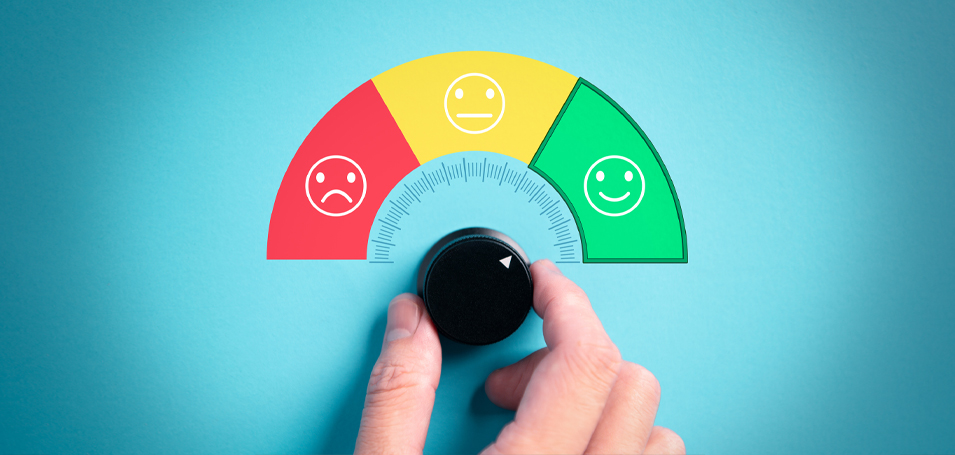Developing an effective customer education strategy isn’t easy. Expert opinion on the best approach differs. Internally, people will have different ideas. As with any wide-reaching strategy, there are a lot of moving parts.
The challenge of nailing down a strategy that will produce a robust customer education program is so great that many organizations find themselves caught in a sort of inertia. According to our 2020 State of Customer Training Report, 96% of companies believe that customer training is important to their organization. However, almost half stated that they are struggling to measure the impact of customer training. And only 14% believe a majority of their customers are adequately trained.
Building a customer education strategy involves answering fundamental questions:
- What content should we generate?
- Who is our target audience?
- How should we measure results?
- When and where do we iterate and make changes?
To help enterprises get it right, we have published a research-backed and validated methodology in The Customer Education Playbook. Composed in partnership with some of the most established names in customer education, the playbook walks through 12 steps to help enterprises nail their content development – and every other element of customer education strategy. Pitching strategies, communicating goals, reaching audiences from pipeline to retention – these and many other topics are covered in the guide. The guide contains 12 steps; here is a little taste of four of those twelve.
Define Your Customer Education Strategy Goals
When you’re developing a customer education strategy, you need executive buy-in. The way to get this buy-in is by having clear goals that tie into the financial wellbeing of the company. At the start of your journey, define goals that tie to an empirical benefit that leaders understand.
To learn even more about this topic, I recommend you sign up for COGNITON onDemand and view this session: The Subtle Art of Acquiring Extended Organizational Buy-In (with Donna Weber and 3 customer education experts).
Will your strategy create an all-new revenue stream? Will it impact product adoption? Perhaps it will deflect support tickets?
These are all solid strategic goals. But which one is right for you will depend on your unique market position. The broader business goals of your organization will trickle down and define the meaning of customer success, and the appropriate customer education program metrics. These metrics will have a close relationship with how you approach content development, as well as the monetization of your content. You will need to define your customer education goals, and consider the pros and cons of “free” vs “fee” customer education content.
Determine How Your Customers View Success
In customer education programming, how the enterprise views success isn’t the only viewpoint that matters. You also need to determine how your customers view success. Case in point: we at Thought Industries don’t just teach you how to utilize our customer training platform; we also want you to be confident that the training you’re delivering is outstanding.
The Customer Success Association’s executive director Mikael Blaisdell defines customer success as “a long-term, scientifically engineered, and professionally directed strategy for maximizing customer- and company-sustainable proven value.”
This holistic approach is key to developing a customer education strategy that works for both you and your customer. Enterprises should ask themselves questions such as:
- What core problem does our service or product solve for our customers?
- How do your customers know that your service or product works? What metrics do they measure? What results are they achieving?
- Looking at your customers’ jobs and the problems they’re trying to solve, what are their goals outside of your product?
- Flip the answer to the former question inward: how does your product or service align with their goals?
- Do your customers’ goals change based on different demographics or segments? (If so, go through each question again for each segment.)
Finally, make it a habit to ask these questions throughout the process. Customers’ goals have a tendency to evolve over time, so even if you understand their needs early on, you still need to constantly check on their goals as you progress. This ensures your customer education program continually meets those goals.
Determine Your Customers’ Personas and What They Need to Achieve Success
Once you’ve understood both your customers’ objectives and your own business goals, it’s time to evaluate what you’ll provide to your customers to achieve those goals. One of the key customer education best practices is to segment your customers into learning personas. This way, you can easily identify who needs to learn what by when.
Building effective customer personas means asking the following questions:
- Who are your customers’ customers? Are they content creators? Technical administrators? Team leaders?
- Where are they in the customer lifecycle? Are they onboarding? Are they already brand advocates? Or are they still prospects?
- Which segment do they belong to? What challenges does that segment present?
As you develop this understanding, you can start unpacking what the end user needs to know. Use these questions as a guide:
- What are the unique challenges that each learning persona experiences?
- What features or functions of your product or service are most vital to achieving customer success?
- What can you supplement your customers with to help them generate better results with your product? (Case in point: Hubspot Academy not only teaches customers the basics of building a landing page. They make sure to teach them how to build high-converting ones that bring results.)
Personas are subtle, powerful things, and these are just a small sample of the questions you need to ask. Read the whole playbook for more.
Start Creating Your Customer Education Development Plan
When you’re clear on what success looks like for your customers, as well as what they require to achieve that success, it’s extremely tempting to start content creation. But don’t dive in too fast. First, create a customer education strategy and development plan.
Our recommendation is to separate this process into smaller buckets to ensure you cover all your bases. For the groundwork, start with:
- Timelines. How long will it take to create/curate the content you’ll be using?
- Technology stack. Which tools and solutions will you need? Do you need something new?
- Content Team. Who will be responsible for content creation? Review? Approval?
- Budgeting. How much will the program cost, considering the resources and manpower you’ll need?
- ROI. Will you be monetizing your content? What other outcomes are you hoping to achieve?
- Organizational Buy-in. What are the financial benefits of your customer education strategy?
A piece of advice, however: don’t make the mistake of being a perfectionist when creating your development plan. Dave Derrington, one of the founders of The Customer Education Lab (CELab), says:
“When it comes to your content development plan, resist the temptation for perfection. Obey the 80/20 Rule because speed is everything. Every day that passes is another day your customers struggle (or rather, call their CSM or Support!).”
By implementing effective customer education best practices, you can set yourself up for success. Getting your customer education program right is more important than never. As our CEO, Barry Kelly, says: “As businesses rapidly shift to online learning to fill the void of in-person training and events, they’re at the crossroads of speed and quality. Product adoption and learner engagement have become critical components of retaining customers and enhancing brand loyalty, while customer training has become an integral driver to business success at scale.”

The Customer Education Playbook is your guide for a measurable, impactful, and scalable customer education strategy. The Playbook is validated by nearly 200 interviews with leading contributors to customer education and distills the very best of wisdom on this topic. Happy reading!



